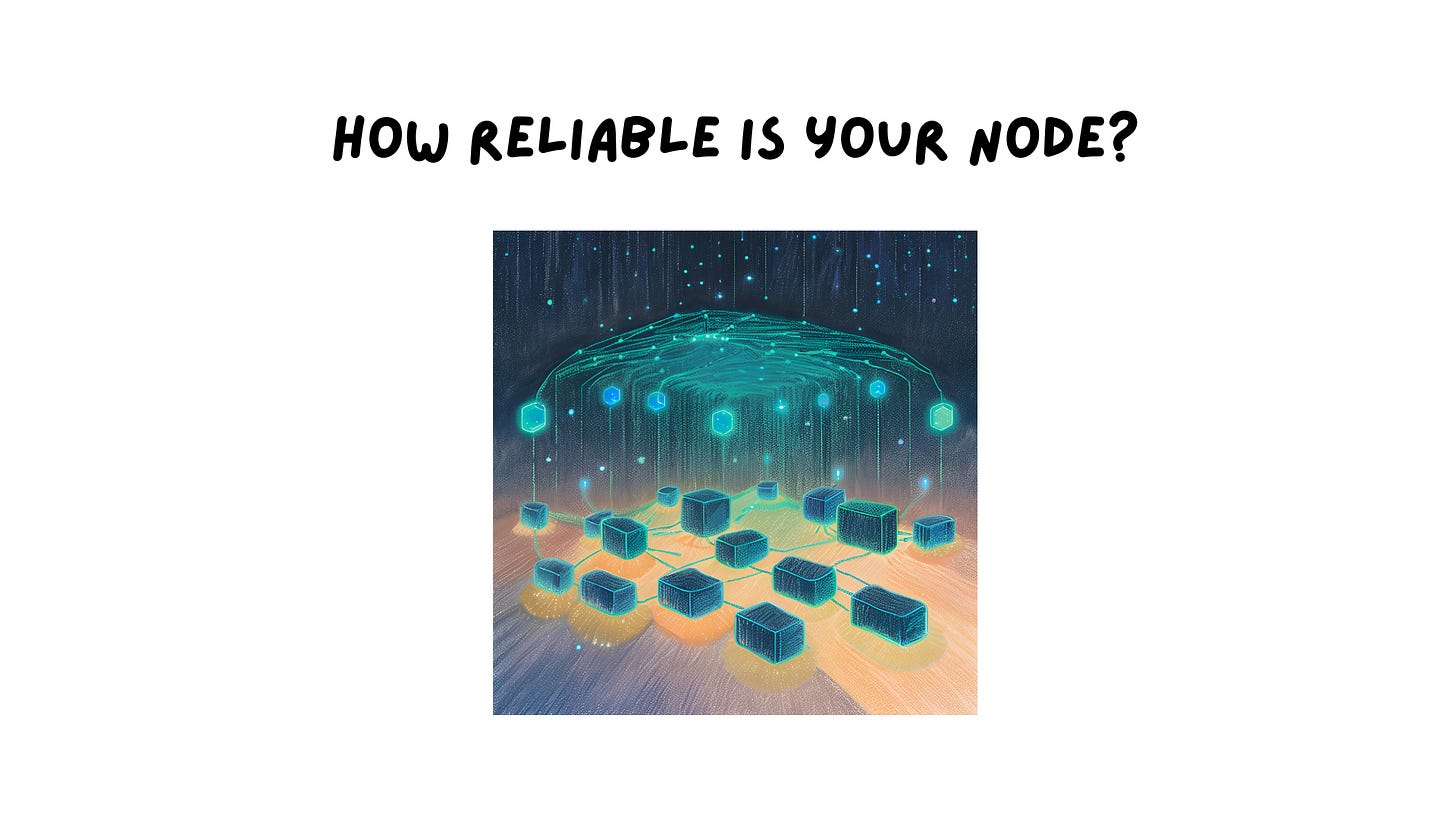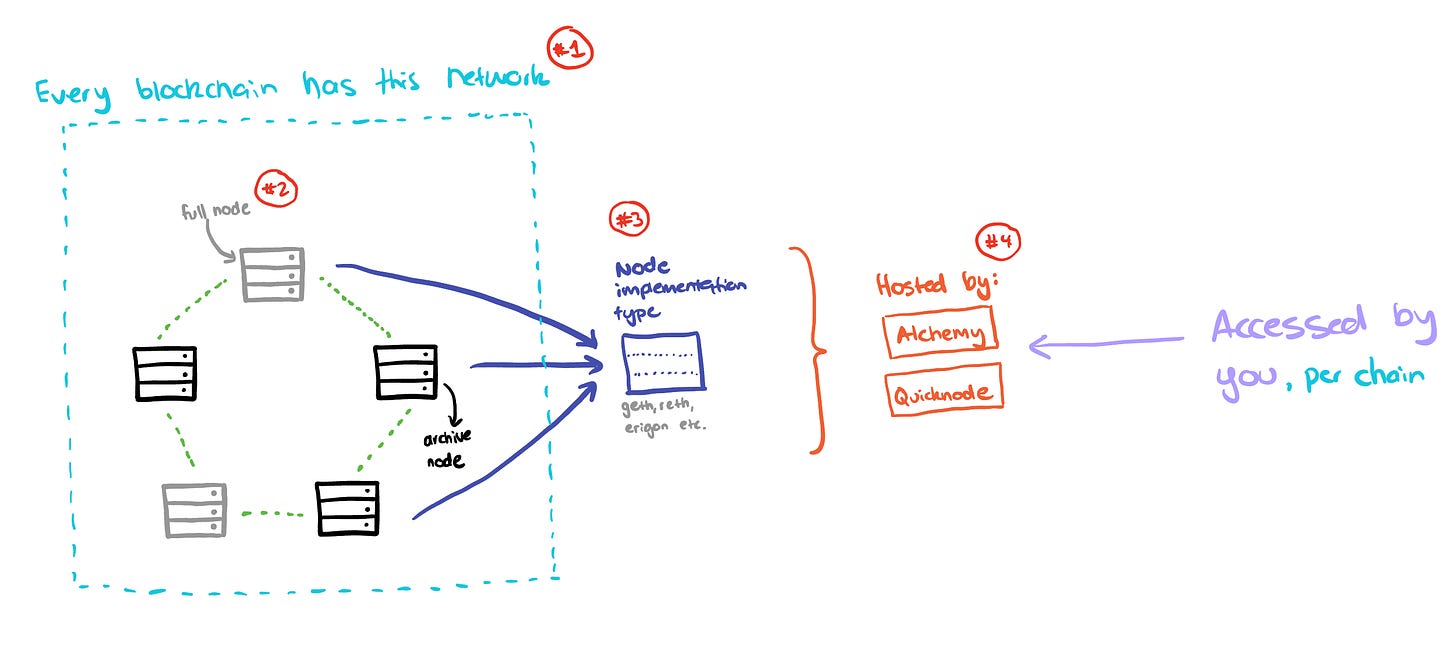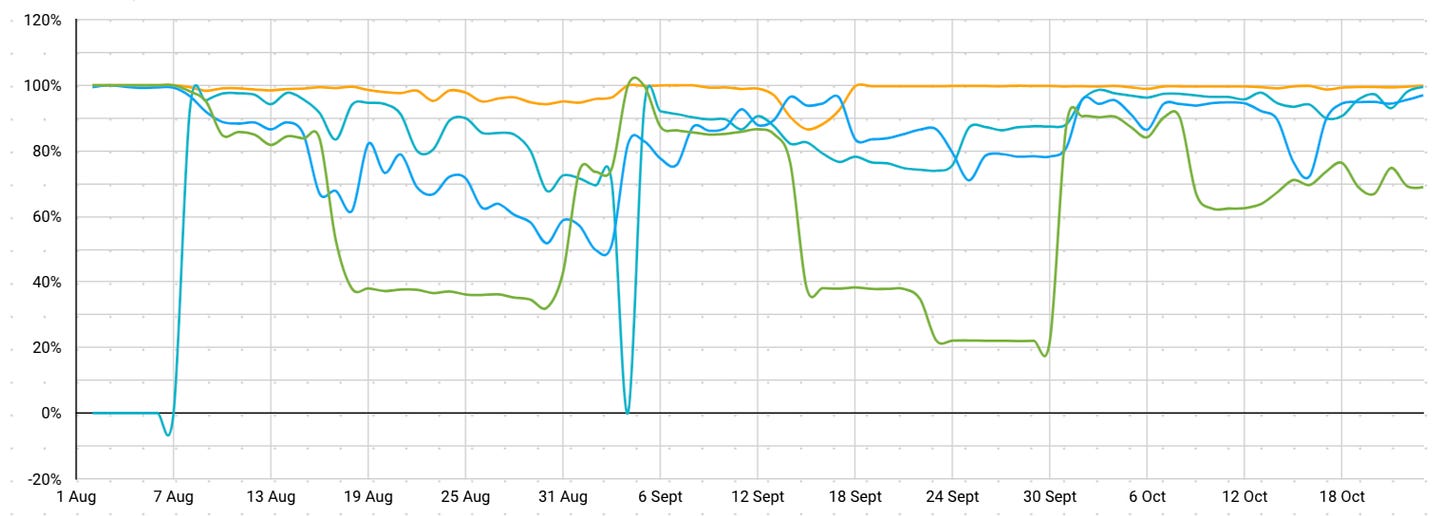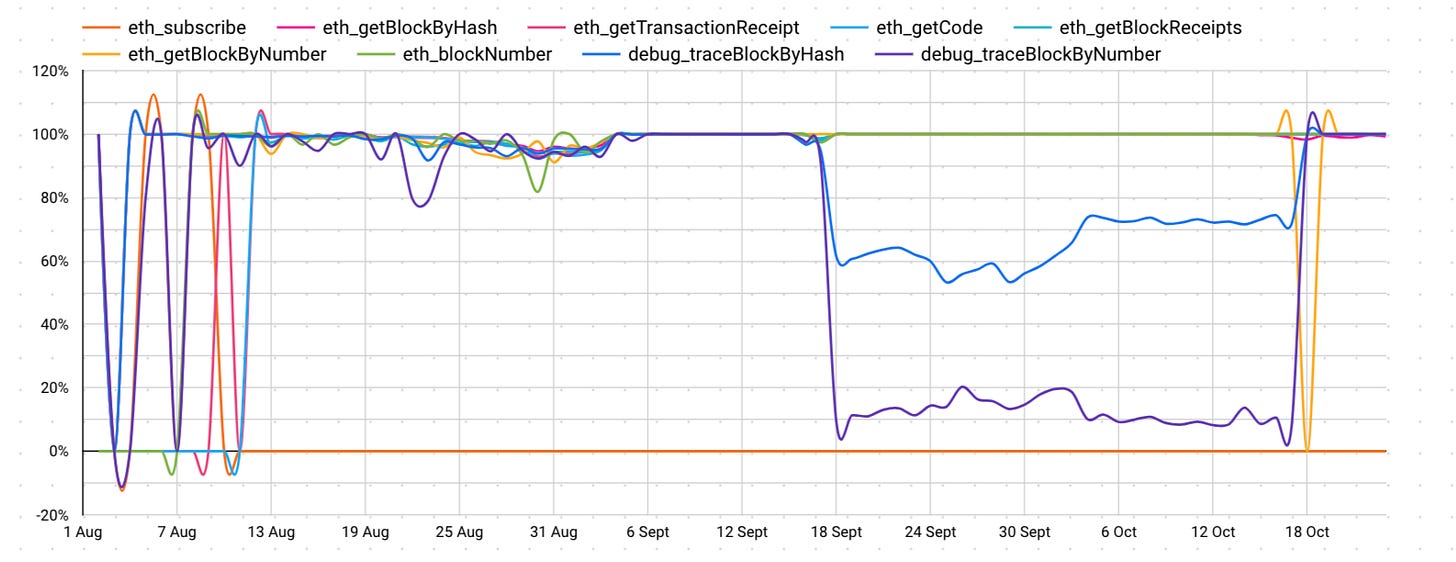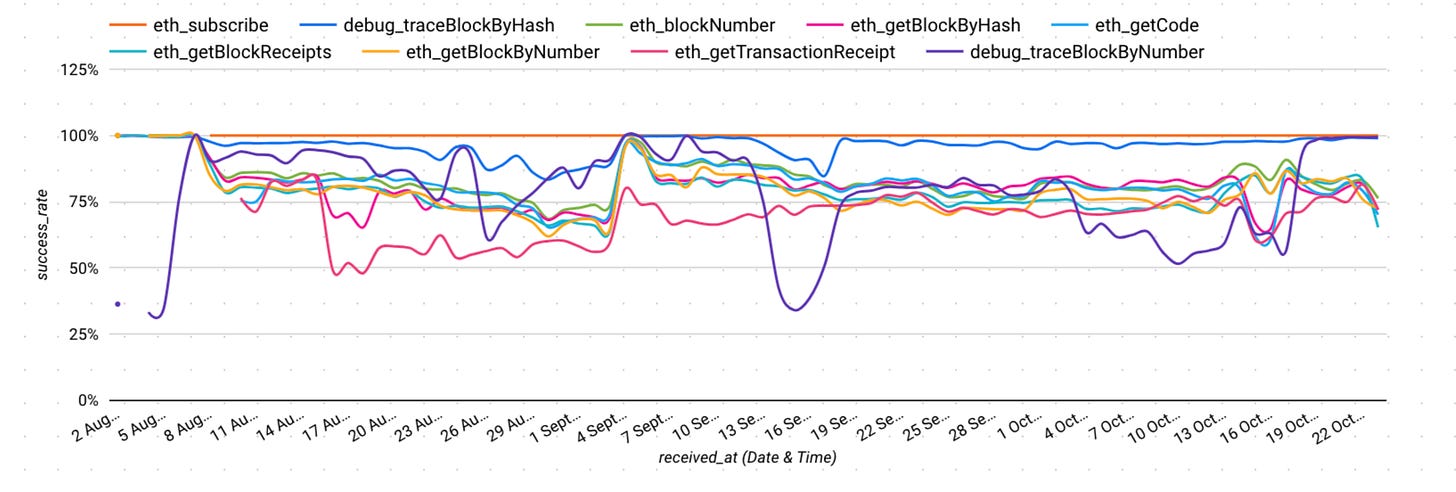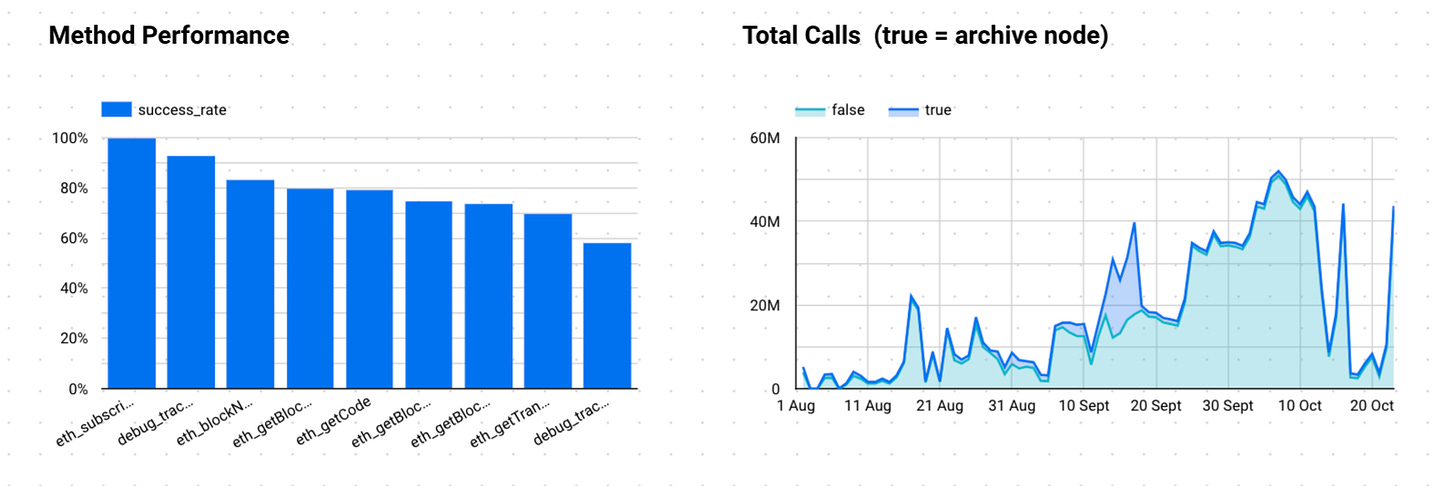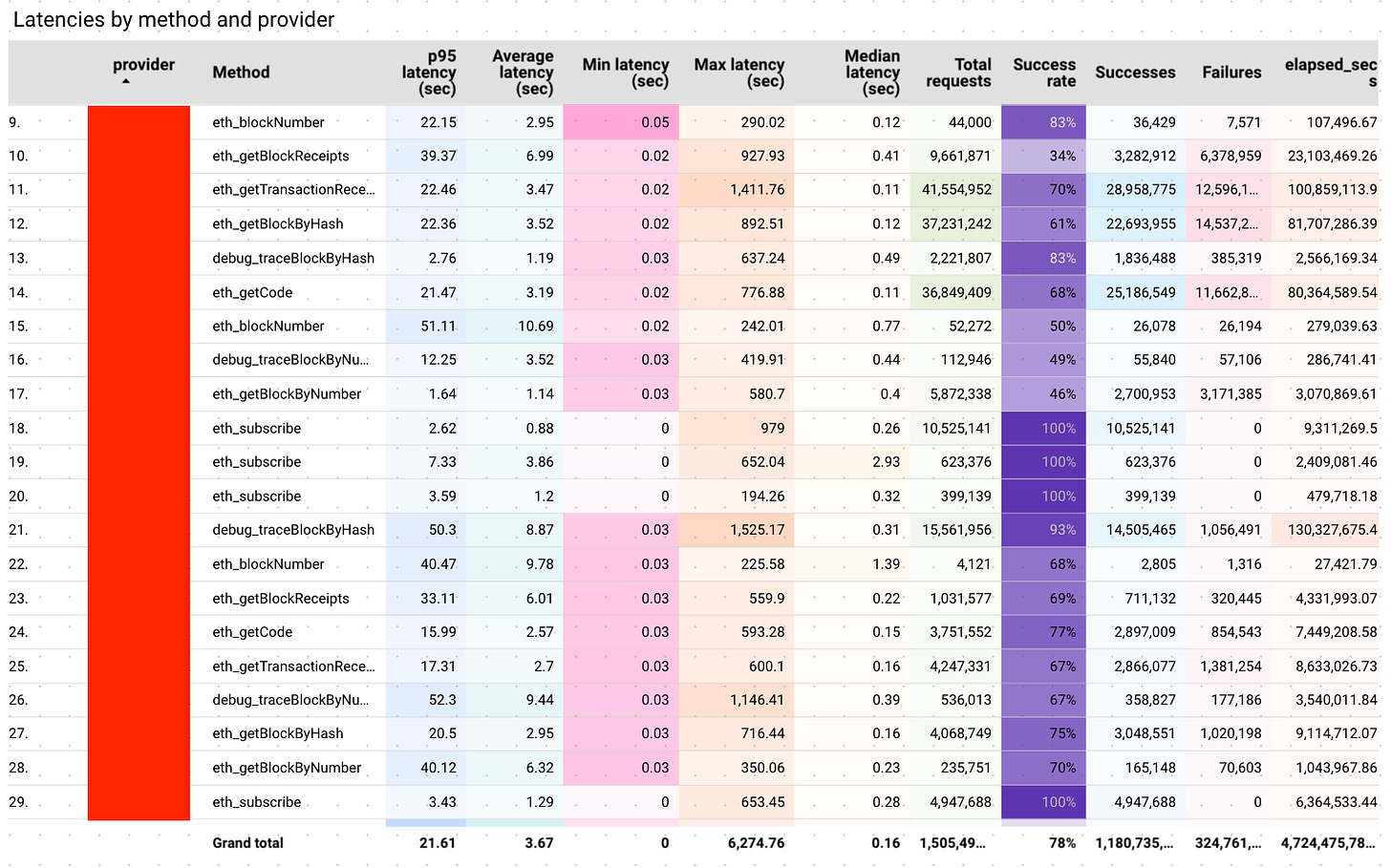At 0xArc, we have to have each piece of information, on each chain, at each cut-off date (previous, current and to-be-future). Consequently, our information warehouses are lots of of terabytes in dimension. To get this information we’ve made billions of RPC calls and proceed to make lots of of thousands and thousands monthly throughout many blockchain networks. Sadly, we discovered, on common, RPC calls to nodes work roughly ~80% of the time relying on situations with 10x variances in pricing! This text shares a few of our findings and can hopefully be helpful to the remainder of the group.
Earlier than we discuss numbers it’s vital to grasp how the node trade works in crypto so we will correctly perceive what we’re discussing. Whereas it’d be nice if everybody ran their very own nodes and we adopted excellent rules of decentralisation, the truth is that operating a node is advanced and requires experience. Subsequently we delegate this duty to a node supplier. This diagram relies on how the industrial node trade works in 2024 in crypto.
At a excessive degree, you could have full or archive nodes which are run on a particular sort of node implementation (geth/reth/erigon). These nodes are hosted by a supplier similar to Alchemy or Quicknode for each blockchain community they help. You because the RPC shopper entry all of this on the finish of the road.
Once you deconstruct this chain of logic, you could have 4 major dimensions that can enormously influence efficiency:
-
The chain you’re making RPC requests to: every chain’s community of nodes behave in another way and have differing exercise ranges.
-
The tactic you’re calling: this can rely should you’re making full or archive node calls and the node consumer implementation.
-
The supplier that you simply’re utilizing: the entity that hosts the nodes so that you can entry.
-
Once you name the node: node efficiency varies throughout all the above dimensions over time, it isn’t fixed.
With the ability to instrument and perceive this information will be very difficult. Nonetheless, at 0xArc that is our job as we make billions of RPC calls and thoroughly monitor the efficiency of all the things we contact. Efficiency, reliability and price are paramount to us. We all know when a series is down or when a RPC supplier is down earlier than most market members. Right here is the context of the information we’ll taking a look at on this article:
With a view to correctly perceive what’s occurring with over 1b+ rows of information, we’re going to should slice and cube it throughout many dimensions. Fortunately, we all know what these are by the factors I made above.
The remainder of the article will present distinctive situations of how efficiency can range throughout every of those dimensions in an unpredictable means.
Suppose you’re constructing a cross-chain utility that depends on interfacing with numerous networks. Your node’s efficiency will range considerably based mostly on the chain you’re calling and the time you’re calling it.
This primary graph is exhibiting what the common success fee for every chain per day was aggregated throughout all suppliers and strategies. As you possibly can see from the chart beneath, the common success fee you get from chains varies considerably virtually each month. We’re unsure why this can be the case however we will see that Polygon calls had been profitable on common 60% of the time in August however then have spiked as much as 80%+ in newer weeks.
A key caveat of this information when evaluating it isn’t: “Polygon is a bad chain and RPC calls only succeed 70% of the time on average”. That is the blended common success fee throughout all chains, all suppliers, all strategies over a ~2.5 month interval. As we dig into any of those dimensions the information adjustments considerably.

This is identical chart however for a 17 day interval and filtered by a single supplier. As you possibly can see the graph is lots smoother and varies from the general combination.
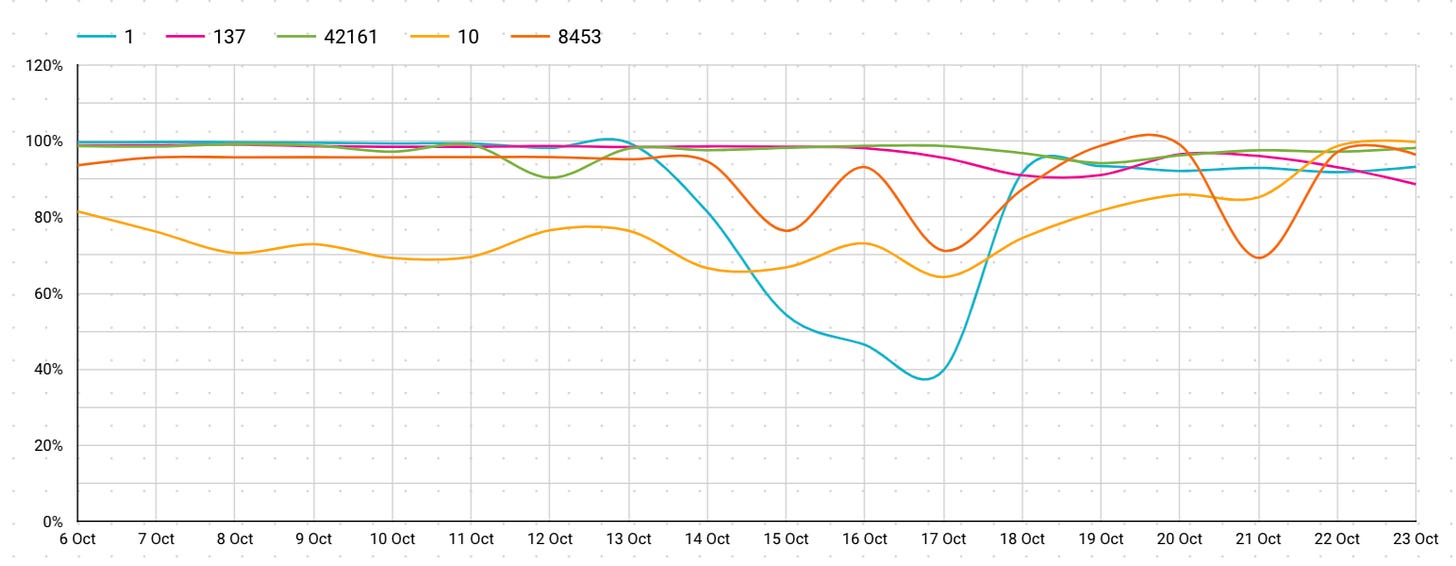
If we see a single supplier doing effectively, what stops us from doubling down on them on a regular basis? The following part addresses that query with extra nuance.
This subsequent graph I simplified as a result of I needed to keep away from having too many traces. Every of those represents a serious RPC supplier community and their success fee aggregated throughout all chains and strategies. As you possibly can see from the chart beneath, the orange supplier is without doubt one of the most dependable relative to the others and the distinction is kind of staggering!
As soon as once more, the plain may simply be “use orange provider” as a result of it performs effectively. Sadly, that doesn’t actually work both. After we have a look at orange supplier’s efficiency for simply Ethereum, the archive node strategies can have dramatic drops in efficiency. As you possibly can see for nearly one month, archive nodes carried out terribly on what was meant to be “the best provider” in our above instance.
So if we’re after the most effective efficiency for sure strategies, we have to look nearer.
Our ultimate chart beneath reveals how success throughout numerous strategies adjustments significantly month-to-month. Relying on should you’re making calls to full nodes versus archive nodes, your efficiency will range considerably. We noticed this briefly in an remoted instance with the only supplier on a series above, however now we now have a extra zoomed out view.
If we common out this information, we get the beneath breakdown of common success fee per methodology with the accompanying areas chart exhibiting a breakdown of archive versus non-archive node calls. Once you put it like this, you realise simply how unreliable nodes will be whenever you’re wanting throughout many dimensions. Many occasions, node suppliers use shiny advertising numbers on restricted time frames to market their efficiency. It isn’t till you hammer them at scale do you see the actual metrics.
So what’s the easiest way to pick out a node? One line of argument to this complexity could also be to only use the orange supplier in our above instance, nonetheless when their programs begin failing and experiencing giant drop offs, your downstream programs will fail due to them.
One technique to keep away from that is by having fall-back suppliers in your system. Nonetheless, these fall-back suppliers require handbook upkeep and add to latency by sub-optimal routing. Ideally you wish to have information on how all these routes carry out in a dynamic, clever means — somewhat than static if/else clauses in your code base.
To make issues much more difficult, pricing for each supplier adjustments on a per chain and methodology foundation. These variations be be as a lot as 10 occasions the associated fee per methodology/chain. Out of the blue a 10-20% distinction in efficiency finally ends up costing you much more! Every supplier desires to lock you right into a yearly plan or a month-to-month quota which has further prices. Virtually no supplier is pure utilization based mostly which implies you’re pressured to take a wager on a single one — with none information! What’s a “simple service” on the outset, really has nice variance in efficiency when inspected intently.
If you happen to’re paying for RPCs or interested by your infrastructure’s reliability, let’s discover the right way to maximize efficiency throughout chains and suppliers. Attain out to speak about our findings or to see how we will help.
-
At the moment paying for RPCs and wish to study extra about the right way to enhance your reliability
-
Are a RPC supplier and wish to know the way your nodes carry out
-
Interested by signing as much as a RPC service and would really like some recommendation
Attain out to me instantly from this e-mail or by emailing me at k@0xarc.io so we will setup a while to speak.

